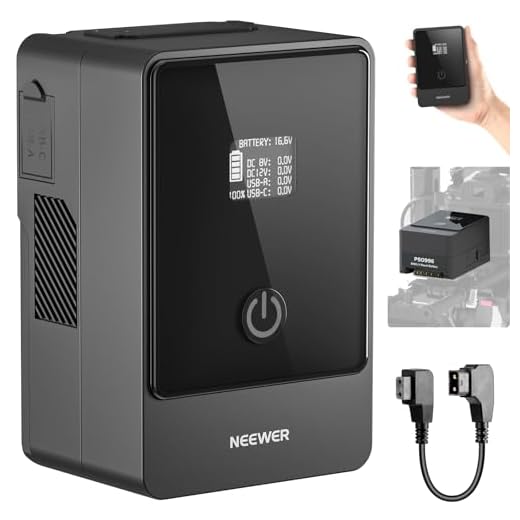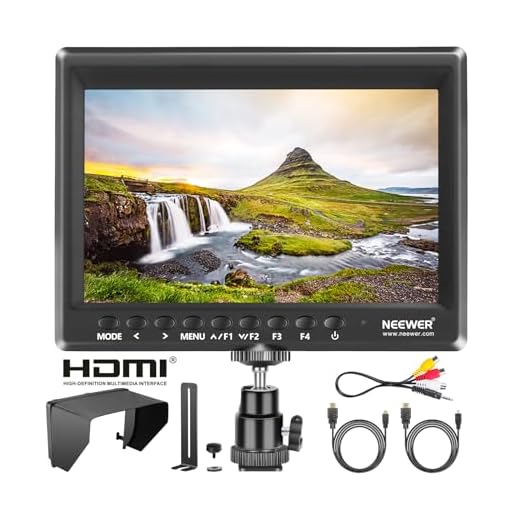




Shooting an interview on a DSLR camera can be a great way to capture high-quality video with a professional look. However, one of the common concerns when using a DSLR for video recording is the limitation on how long you can shoot continuously.
DSLR cameras are not designed for long continuous video recording like traditional video cameras. They have limitations on recording time due to factors such as heat generation, file size limitations, and battery life.
Typically, DSLR cameras have a recording limit of around 20-30 minutes per clip. This means that if you are shooting an interview that is longer than this duration, you will need to stop and start recording multiple times to capture the entire interview.
To overcome this limitation, you can use external recorders or capture devices that allow for longer recording times, or simply plan your interview in segments to work within the DSLR’s limitations.
Factors that affect the duration of shooting an interview on a DSLR camera
When shooting an interview on a DSLR camera, several factors can influence the duration of the process. Here are some key factors to consider:
- Preparation: Adequate preparation before the interview can significantly reduce the shooting time. This includes setting up the camera, testing audio levels, and ensuring proper lighting.
- Interviewee: The experience and comfort level of the interviewee can affect the duration of the shoot. A confident and articulate interviewee may require less time compared to someone who is nervous or less prepared.
- Number of questions: The length and complexity of the questions asked during the interview can impact the shooting time. A shorter list of concise questions may result in a quicker shoot.
- Location: The location of the interview can also play a role in the shooting duration. A controlled environment with good acoustics and lighting can streamline the process, while shooting on location may require more time for setup and adjustments.
- Technical issues: Any technical issues with the camera, audio equipment, or lighting can prolong the shooting time. It is essential to address and resolve any technical problems promptly to avoid delays.
By considering these factors and planning accordingly, you can optimize the shooting process and ensure a smooth and efficient interview on a DSLR camera.
Camera settings and battery life
When shooting an interview on a DSLR camera, it’s important to optimize your camera settings to maximize battery life and recording time. Here are some tips:
| Resolution and frame rate: | Lowering the resolution and frame rate can help conserve battery life. Choose the lowest settings that still meet your quality requirements. |
| Auto power off: | Enable the auto power off feature on your camera to automatically turn off the camera after a period of inactivity. This can help save battery power when you’re not actively shooting. |
| Use an external battery: | If you anticipate shooting for an extended period of time, consider using an external battery pack or a battery grip to ensure you have enough power to last through the entire interview. |
| Battery management: | Monitor your battery level throughout the shoot and have spare batteries on hand. It’s also a good idea to fully charge your batteries before the interview to ensure they last as long as possible. |
By optimizing your camera settings and managing your battery effectively, you can shoot an interview on a DSLR camera for an extended period of time without running out of power.
Lighting conditions and setup
When shooting an interview on a DSLR camera, it is important to pay attention to the lighting conditions in order to achieve the best results. Here are some tips for setting up the lighting:
- Make sure the lighting is even and diffused to avoid harsh shadows on the subject’s face.
- Use natural light whenever possible, but avoid direct sunlight as it can cause overexposure.
- If shooting indoors, use softbox or umbrella lights to create a flattering light on the subject.
- Consider the background lighting as well to ensure a cohesive look for the interview.
- Adjust the white balance on your camera to match the lighting conditions for accurate colors.
By paying attention to the lighting conditions and setting up the lights properly, you can ensure that your interview footage looks professional and engaging.
Sound quality and equipment
When shooting an interview on a DSLR camera, sound quality is just as important as video quality. To ensure clear and crisp audio, it’s essential to invest in high-quality audio equipment. A good external microphone can make a world of difference in capturing sound accurately and eliminating background noise.
Microphone types
There are different types of microphones to choose from, such as shotgun microphones, lavalier microphones, and handheld microphones. Each type serves a specific purpose, so it’s crucial to select the right microphone based on your shooting environment and the desired sound quality.
Audio recording setup
In addition to a quality microphone, you’ll also need a recorder or audio interface to capture the audio separately from the camera. This setup allows you to have more control over the sound levels and ensures that you can achieve the best possible sound quality during the interview.
Interviewee’s comfort and preparation
When shooting an interview on a DSLR camera, it is important to ensure that the interviewee is comfortable and prepared for the recording. Make sure to communicate with the interviewee beforehand to discuss the interview topics and any questions they may have. This will help them feel more at ease during the recording and deliver better answers.
Encourage the interviewee to dress appropriately and avoid distracting patterns or colors that may not translate well on camera. Additionally, provide them with water and breaks as needed to keep them comfortable throughout the filming process.
It is also important to check the lighting and sound levels to ensure the interviewee is well-lit and audible. This will help create a professional-looking interview that viewers will enjoy watching.
Location and background selection
When shooting an interview on a DSLR camera, choosing the right location and background is crucial for creating a professional-looking video. Here are some tips to help you select the perfect setting:
1. Quiet environment
Ensure that the location is quiet and free from distractions to avoid any unwanted noise in the audio recording. Choose a space with minimal background noise and consider using a lavalier microphone for better sound quality.
2. Well-lit space
Select a location with good natural lighting or set up artificial lighting to ensure that the subject is well-lit and clearly visible. Avoid shooting in areas with harsh shadows or uneven lighting that can affect the overall quality of the video.
Post-production editing and processing
After shooting an interview on a DSLR camera, the next step is post-production editing and processing. This stage is crucial in ensuring that your video looks professional and polished. Here are some key steps to consider:
1. Import footage
Start by importing your footage from the DSLR camera to your editing software. Make sure to organize your files properly to streamline the editing process.
2. Edit the interview
Trim the footage, remove any mistakes or unwanted sections, and enhance the overall flow of the interview. Add transitions, text overlays, and graphics as needed to make the video visually engaging.
Consider adding B-roll footage to complement the interview and provide visual interest. This can include shots of the interviewee in action, relevant locations, or other supporting visuals.
3. Color correction and grading
Adjust the color and lighting of the footage to ensure consistency and enhance the overall look of the video. Use color correction tools to correct any color imbalances or lighting issues, and apply color grading to create a cohesive visual style.
Make sure to match the color and tone of different shots to maintain a smooth and professional look throughout the video.
By following these steps, you can create a high-quality interview video that effectively conveys your message and engages your audience.
Experience and Efficiency of the Videographer
When shooting an interview on a DSLR camera, the experience and efficiency of the videographer play a crucial role in determining the quality of the final product. A skilled videographer with years of experience will be able to set up the camera quickly, adjust lighting, and frame shots effectively, saving time during the shoot.
Efficiency is also key when shooting interviews on a DSLR camera. A videographer who is well-versed in the technical aspects of the camera, such as adjusting exposure, focus, and white balance, will be able to work more efficiently, ensuring that the interview runs smoothly and that the footage is of high quality.
Benefits of Hiring an Experienced Videographer
1. Faster setup and shooting process
2. Ability to adapt to changing conditions and challenges
Table: Experience vs. Efficiency
| Experience | Efficiency |
|---|---|
| Years of experience in videography | Technical proficiency with DSLR camera |
| Ability to problem-solve on the spot | Quick adjustments for optimal footage |
FAQ
How long can I shoot an interview on a DSLR camera?
The length of time you can shoot an interview on a DSLR camera will depend on several factors, such as the model of the camera, the resolution and frame rate settings, and the storage capacity of your memory card. In general, most DSLR cameras can shoot continuous video for around 20-30 minutes before they automatically stop recording to prevent overheating. However, you can start recording again immediately after the camera stops, so you can technically shoot longer interviews by splitting them into shorter segments.
What can I do to shoot longer interviews on a DSLR camera?
If you need to shoot longer interviews on a DSLR camera, you can consider using an external recorder connected to the camera via HDMI or using a camera with unlimited recording capabilities. Additionally, you can shoot in lower resolution or frame rate settings to reduce the file size and allow for longer recording times. It’s also important to monitor the temperature of your camera during extended recording sessions to prevent overheating.
Is it possible to shoot a feature-length film on a DSLR camera?
While shooting a feature-length film entirely on a DSLR camera is technically possible, it may not be the most practical choice due to the limitations of DSLR cameras in terms of recording time, battery life, and ergonomics. Professional filmmakers typically opt for cinema cameras or higher-end digital cameras that are specifically designed for long-form video production. However, with careful planning and the right accessories, you can use a DSLR camera to shoot shorter films or independent projects.
What are the advantages of shooting an interview on a DSLR camera?
Shooting an interview on a DSLR camera can offer several advantages, such as a shallow depth of field for a cinematic look, interchangeable lenses for creative flexibility, and relatively affordable equipment compared to traditional video cameras. DSLR cameras also tend to perform well in low-light conditions, making them suitable for interview settings with varying lighting. Additionally, the compact size and portability of DSLR cameras make them a convenient choice for on-the-go shooting.








